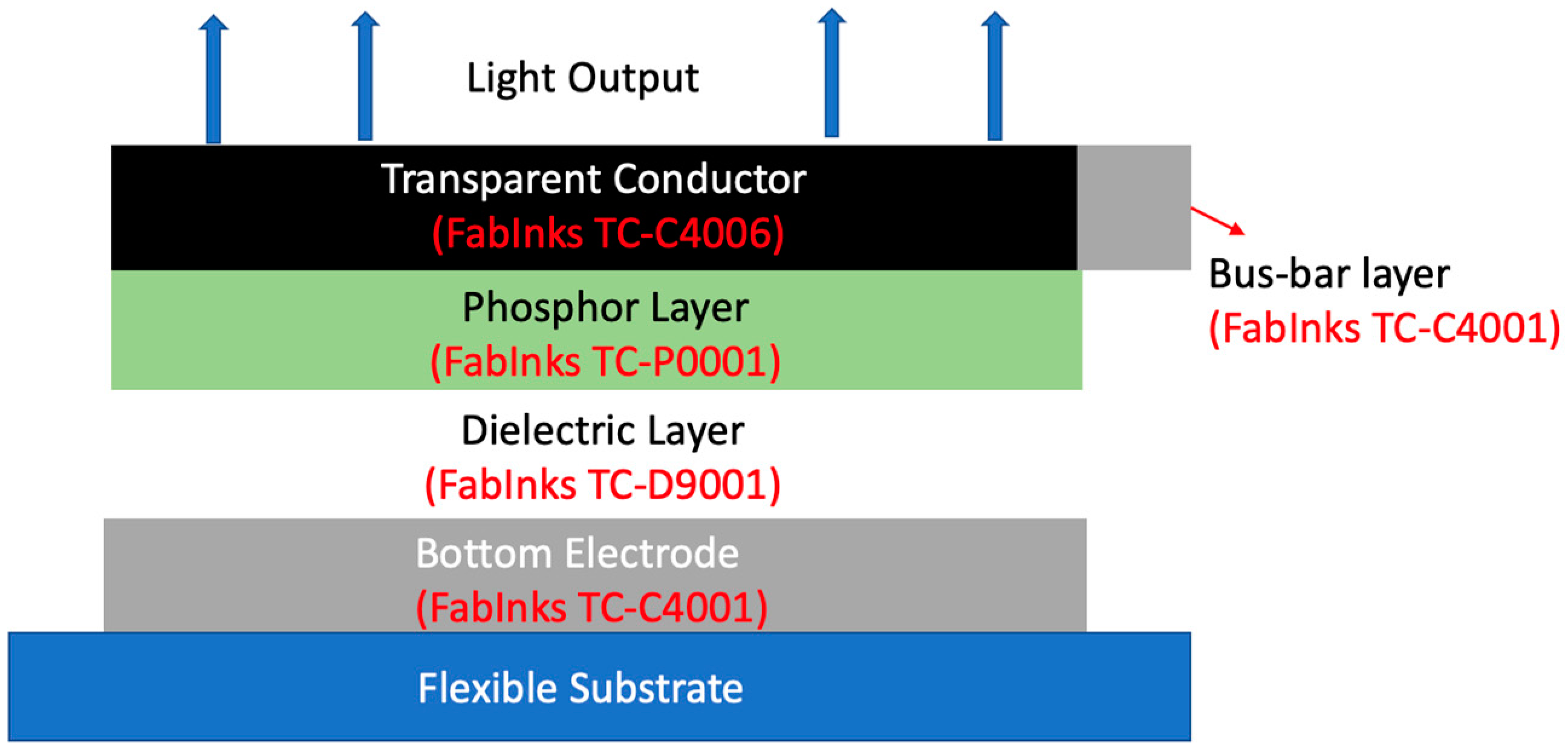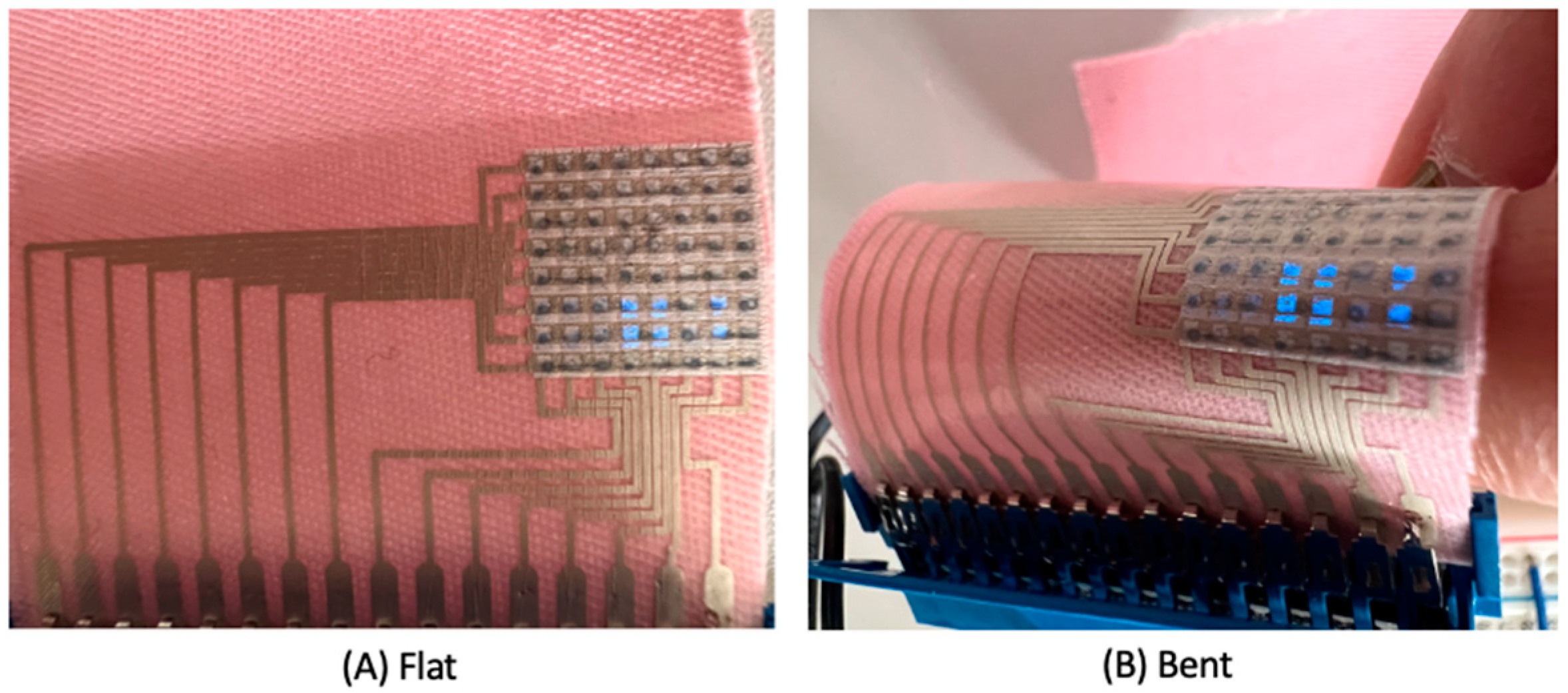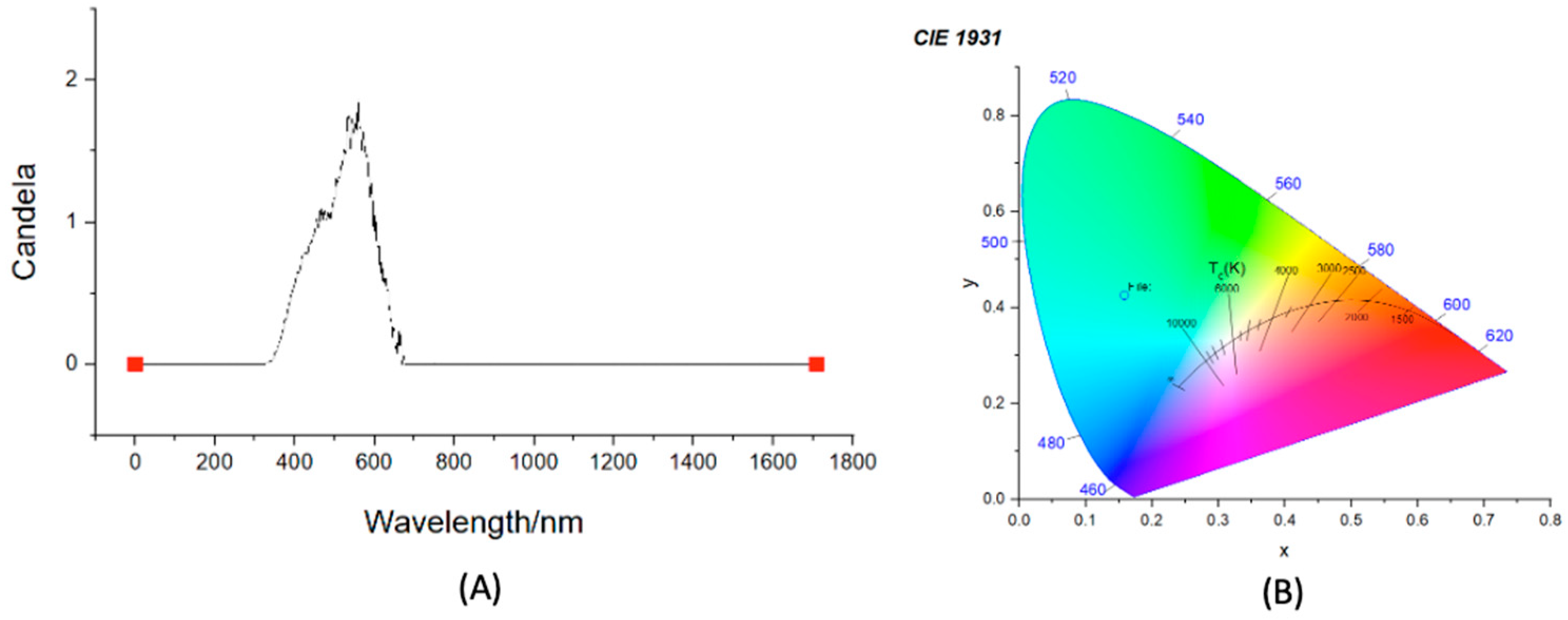A Screen-Printed 8 × 8 Pixel Electroluminescent Display on Fabric †
Abstract
1. Introduction
2. Materials and Methods
2.1. Electroluminescent (EL) Lamp Structure
2.2. EL Pixel Arrays Fabrication
2.2.1. Screen Design
2.2.2. Screen Printing Process
- Print silver layer to create the conductive tracks and conductive pads. The paste was cured in a box oven at 120 °C for 10 min;
- Print dielectric layer to prevent short circuit across the capacitor structure and acts as a light reflector. The paste was cured at 130 °C for 15 min;
- Print phosphor light-emitting layer. The paste was cured at 130 °C for 15 min;
- Print busbar layer to create conductive tracks and conductive pads. The paste was cured at 120 °C for 15 min;
- Print PEDOT layer to allow light emission from the phosphor layer. The paste was cured at 130 °C for 15 min.
3. Results and Discussions
4. Conclusions
Author Contributions
Funding
Institutional Review Board Statement
Informed Consent Statement
Data Availability Statement
Conflicts of Interest
References
- Ivanov, A. A printed electroluminescent matrix display: Implementation details and technical solutions. In Proceedings of the 2018 IMAPS Nordic Conference on Microelectronics Packaging (NordPac), Oulu, Finland, 12–14 June 2018. [Google Scholar] [CrossRef]
- de Vos, M.; Torah, R.; Glanc-Gostkiewicz, M.; Tudor, J. A Complex Multilayer Screen-Printed Electroluminescent Watch Display on Fabric. J. Disp. Technol. 2016, 12, 1757–1763. [Google Scholar] [CrossRef]





Disclaimer/Publisher’s Note: The statements, opinions and data contained in all publications are solely those of the individual author(s) and contributor(s) and not of MDPI and/or the editor(s). MDPI and/or the editor(s) disclaim responsibility for any injury to people or property resulting from any ideas, methods, instructions or products referred to in the content. |
© 2023 by the authors. Licensee MDPI, Basel, Switzerland. This article is an open access article distributed under the terms and conditions of the Creative Commons Attribution (CC BY) license (https://creativecommons.org/licenses/by/4.0/).
Share and Cite
Dai, H.; Greig, T.; Torah, R.; Beeby, S. A Screen-Printed 8 × 8 Pixel Electroluminescent Display on Fabric. Eng. Proc. 2023, 30, 2. https://doi.org/10.3390/engproc2023030002
Dai H, Greig T, Torah R, Beeby S. A Screen-Printed 8 × 8 Pixel Electroluminescent Display on Fabric. Engineering Proceedings. 2023; 30(1):2. https://doi.org/10.3390/engproc2023030002
Chicago/Turabian StyleDai, Huanghao, Thomas Greig, Russel Torah, and Steve Beeby. 2023. "A Screen-Printed 8 × 8 Pixel Electroluminescent Display on Fabric" Engineering Proceedings 30, no. 1: 2. https://doi.org/10.3390/engproc2023030002
APA StyleDai, H., Greig, T., Torah, R., & Beeby, S. (2023). A Screen-Printed 8 × 8 Pixel Electroluminescent Display on Fabric. Engineering Proceedings, 30(1), 2. https://doi.org/10.3390/engproc2023030002







